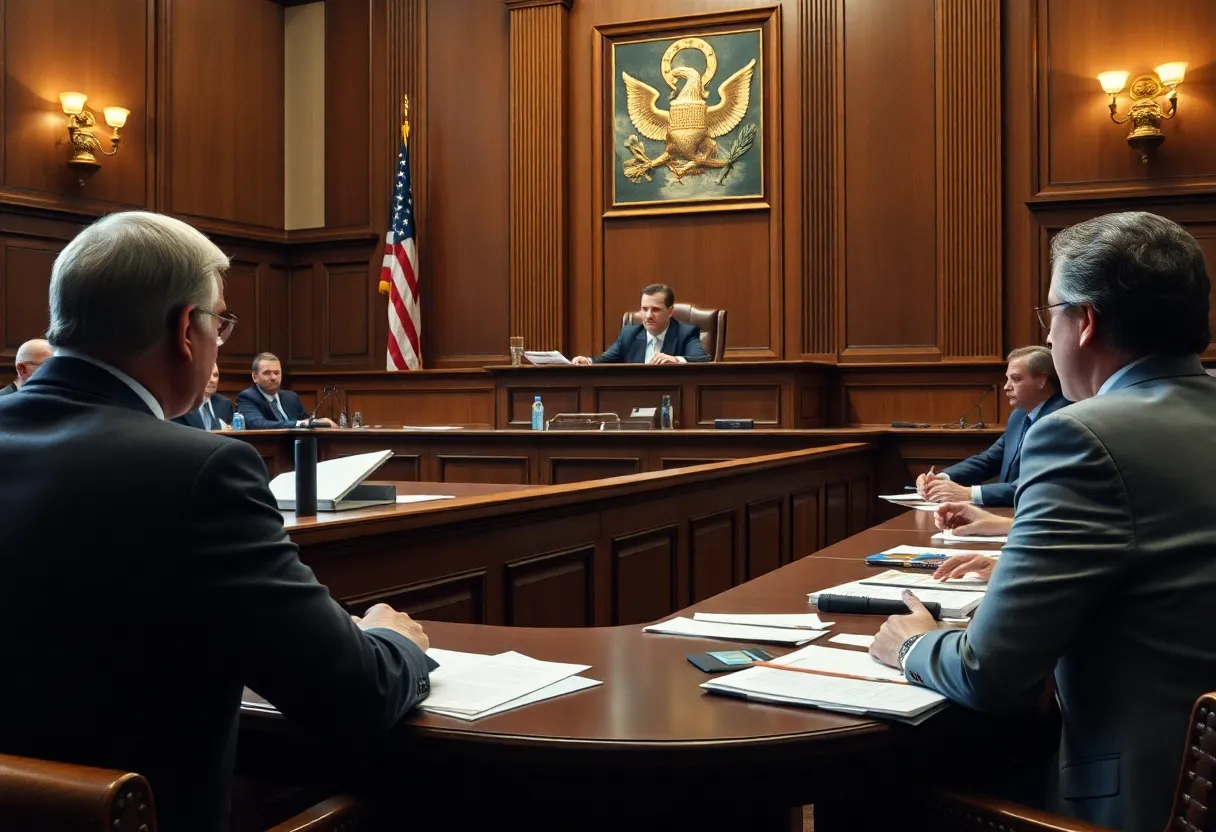

A pivotal moment in the Johnson & Johnson talc lawsuit as a judge issues a ruling.
A U.S. bankruptcy judge has dismissed Johnson & Johnson’s $8 billion settlement proposal related to ongoing lawsuits over asbestos contamination in talc products. This decision allows over 62,000 lawsuits to proceed, primarily focusing on claims linked to ovarian cancer. Critics argue that the bankruptcy maneuver was an attempt to avoid accountability for misleading safety claims. Following this setback, J&J plans to litigate individual cases instead of seeking bankruptcy relief, impacting both the company’s reputation and stock performance.
In a stunning turn of events, a U.S. bankruptcy judge has rejected Johnson & Johnson’s $8 billion settlement proposal aimed at addressing the multitude of lawsuits surrounding its talcum powder products, which have long been linked to asbestos contamination and ovarian cancer.
The now-voided settlement was envisioned as a program spread over 25 years, intended to provide financial reparations not just to current cancer victims, but also to future claimants. However, this ambitious plan met with obstacles as concerns surfaced regarding the integrity of how votes were collected from plaintiffs supportive of the settlement.
This setback marks Johnson & Johnson’s third unsuccessful attempt to utilize the Texas **two-step** bankruptcy maneuver aimed at securing liability protection from its extensive talcum powder litigation woes. The judge’s refusal to approve the settlement opens the floodgates for over 62,000 lawsuits against J&J, primarily focused on claims of ovarian cancer, with almost 99% of the cases pertaining to this issue. The rejection was also influenced by objections from multiple government entities, including the U.S. Department of Health and Human Services and Veterans Affairs, which expressed fears that J&J’s bankruptcy plan would impede victims from receiving essential reimbursements through programs such as Medicare and Medicaid.
Critics of J&J’s bankruptcy filing, including attorneys representing plaintiffs, have suggested this maneuver was merely a “bad-faith tactic” to evade full accountability for the potential dangers associated with their talcum-based products. Reports indicate consumers were misled for decades about the safety of these products, which are often contaminated with asbestos—a known carcinogen. Lawsuits allege that exposure to these talc products has led to various cancers, including mesothelioma, in addition to ovarian cancer.
With the judge ruling against J&J, the company has confirmed that it will not appeal this decision, thus paving the way for individual talcum powder lawsuits to continue in both state courts and multidistrict litigation. The decision is notable especially since reports suggest that more than 75% of plaintiffs had allegedly voted in favor of the settlement. Despite this apparent consensus, Judge Christopher Lopez expressed concerns over voting irregularities that ultimately influenced his decision against the proposal.
As the dust settles from this critical ruling, Johnson & Johnson has indicated plans to litigate individual cases rather than pursue bankruptcy settlements. It is worth noting that earlier this year, the company had reserved approximately $7 billion for the settlement, funds that now must be reversed after the unfavorable judgment. The corporation’s recent history is marked by settlements for roughly 95% of mesothelioma lawsuits, with average payout figures ranging between $1 million and $1.4 million.
The fallout from this judicial ruling has already been felt in the financial markets, with J&J’s stock price experiencing a decline of 5% following the announcement. Meanwhile, various law firms have declared their intention to expedite trials for victims claiming damages, indicating that the battle for accountability is far from over. Johnson & Johnson also faces a reputation crisis; despite having discontinued talc-based powders in North America since 2020 and globally in 2022, the overarching narrative points to a failure in effectively managing and communicating the safety issues related to their products.
As Johnson & Johnson finds itself entangled in a web of litigation, the rejected bankruptcy settlement marks a profound chapter in the ongoing struggle for justice among those affected by their talcum powder products. With individual lawsuits ready to take center stage, the likelihood of revisiting the company’s long-standing safety claims could bring forth new revelations and fierce courtroom battles in the days to come.
Lawyer Represents Vintage Train Engineer in Asbestos Case
Johnson & Johnson’s Bankruptcy Bid Thwarted: Legal Challenges Intensify
Mesothelioma Lawyer Webinar: Proving Asbestos Exposure
Lawyers Highlight Asbestos Exposure Challenges in Mesothelioma Cases
New Segment ‘Understand the Law’ Empowers Shreveport Residents
Legal Storm Brews Over Johnson & Johnson’s Talc Products
Lawyer Leads Crackdown on THC Products in Omaha
Lawyer Concerns Rise Over Talc Tragedy and Bankruptcy Tactics
Miami Community Lawyer Advocates for Asbestos Victims’ Rights
Six Attorneys from Dean Omar Branham Shirley, LLP Honored as Leading Lawyers
News Summary A 33-year-old Minneapolis man, Dylan Bryan Adams, was arrested for vandalizing multiple Tesla…
News Summary Hall of Fame tight end Shannon Sharpe is facing grave accusations in a…
News Summary Mohsen Mahdawi, a Columbia University student and pro-Palestinian activist, was detained during a…
News Summary Bruce David Bain, a Texas attorney, has confessed to embezzling over $200,000 from…
News Summary Following the tragic death of Ian Tatman from mesothelioma, his family seeks answers…
News Summary Duke Energy announces Tim Pearson as the new South Carolina state president, replacing…